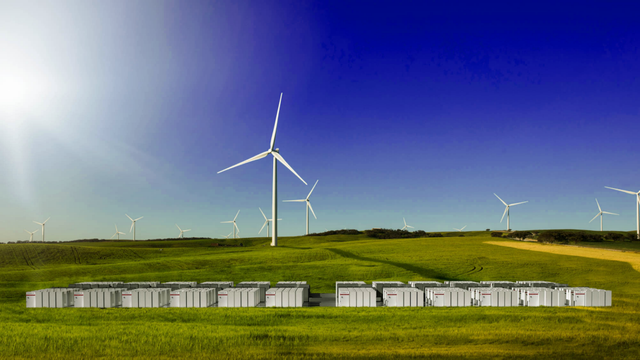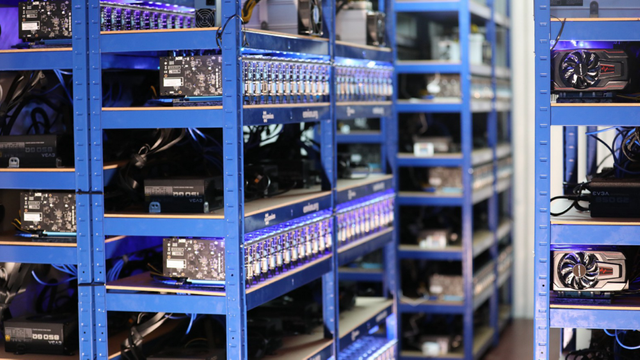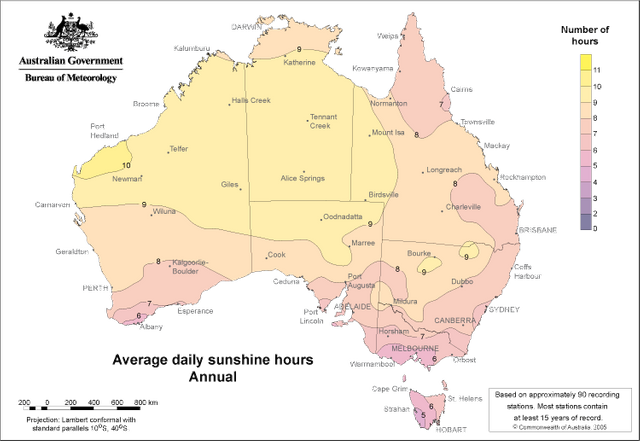
“If you want to find the secrets of the universe, think in terms of energy, frequency and vibration.” — Nikola Tesla
Life, the universe and everything is powered by energy. It’s fundamental at every scale, from the quantum to the cosmic and everything in between.
The progress of our species throughout history has been intertwined with the discovery and use of various energy sources. Burning wood enabled cooking to become our external stomach, burning coal enabled steam engines and the Industrial Revolution, and burning oil enabled combustion engines from which cities and global commerce emerged.
Without energy in the form of electricity, today’s global human civilization would grind to a halt and catapult our species back to the Dark Ages. No more artificial light, refrigerators, internet, smartphones, cat videos, blockchain, and definitely no more mining cryptocurrencies such as Bitcoin or Ethereum.
Blockchains, cryptocurrency and decentralization protocols are the next emergent and revolutionary technologies that are only possible due to advances in computing, the internet, and the abundance of cheap electricity.
But is that electricity truly cheap or have we simply ignored the externalized costs of pollution contributing to the ever-growing threat of global warming?
Fossil fuels currently supply 57.8% of our global electricity generation. Bitcoin consumes more electricity than 2.8 million US households. And just one Bitcoin transaction consumes more electricity than an average household during an entire month. Can we merge the crypto and energy industries to reach 100% renewable energy much sooner?
Solar Abundance, Solar Solutions
Non-renewable energy sources such as coal, gas and oil will inevitably become scarce and expensive while continuing to have a negative impact on the planet. Renewable energy sources such as solar, wind, hydro, geothermal and biomass are the way forward; but only one has a scalable advantage.
“It’s a definition that if it’s not renewable, it’s going to run out at some point. And we will have the choice of the collapse of civilization — and into the Dark Ages we go — or we find something renewable.” — Elon Musk
Solar power via the use of photovoltaics or concentrated systems, is the ultimate energy source for the future of humanity *short of nuclear fusion.
One of my favourite futurists, Peter Diamandis, notes that every 88 minutes some 470 exajoules of energy from the Sun hits the Earth’s surface; way more than humanity consumes in a year. Capture just 1/1000th of that solar power and we’d unlock six times as much energy as we consume in all forms today.
With abundant, clean and renewable energy perhaps it wouldn’t be an issue if mining magic internet coins consumed more electricity than entire countries.
The bonus outcome of achieving abundant energy are solutions to other global problems affecting the planet. About 71% of the Earth’s surface is covered in water, and the oceans hold about 96.5% of water. With abundant energy, suddenly desalination becomes an inexpensive process enabling abundant fresh water. And with abundant water comes abundant food.

Cheap Renewable Days, Cheap Rechargeable Nights
Hopefully you agree we should stop spending 6.5% of global GDP on ludicrous fossil fuel subsidies that feed an industry responsible for the largest share of greenhouse gas emissions (29%), driving us toward the catastrophic 2°C warming threshold which scientists have been warning about for decades.
But why does solar account for only 2.2% of electricity generation in the US? Why are only 1% of rooftops in Sydney equiped with photovoltaics?
It’s not the cost. Solar without any subsidies is now the cheapest energy you can buy *in the sunniest parts of the world. As Ramez Naam notes, in 1977 to buy 1W of solar panel it cost about USD$77. Now it costs USD$0.30.
A recent 300MW solar power project in Saudi Arabia received an incredibly low bid of USD$0.0179 per kilowatt hour (kWh). In comparison, a new gas or coal powered plant costs about USD$0.05 per kWh. That makes solar not just cheaper than coal, but also the cheapest energy source on the planet.
With the Australian economy in a hot mess, one would think that a country with abundant sunlight would embrace and export their solar resource. Perhaps mining solar instead of mining coal will help Australia fumble successfully through the next major global financial meltdown.
In fact Australia is currently leading the way in solving the final piece of the puzzle necessary for solar electricity generation to dominate: batteries. The image above is the famous 100MW Tesla battery installation near Jamestown, South Australia. It’s the largest lithium-ion battery storage project in the world, providing power for more than 30,000 homes.
Without sufficient battery capacity to provide power during the night and throughout overcast days, solar loses its appeal despite the low cost.

Crypto Mining Hash Beast
For those uninitiated in the religion of crypto, the core concept of the technology relies on the distributed computation from thousands of nodes, paired with a trustless decentralized data ledger to keep track of consensus on what happened in a huge open marketplace with no middlemen.
Most cryptocurrencies (for now) use a consensus mechanism called proof-of-work (PoW) where distributed miners (computers or graphics cards) perform complex computational work to secure the network. What that means is I can send you 0.1 Bitcoin [BTC] and the miners automatically confirm I have at least 0.1BTC to send, and that both our balances are updated. No banks.
Anyone can become a miner by contributing their CPU/GPU to the network and earning coins as a reward. In the early days of Bitcoin this was great for anyone with a standard desktop computer and a beefy graphics card.
When I first started mining we were earning ~1BTC per day (USD$0.50 at the time). But nowadays 80% of the network hashrate belongs to huge, massive Bitcoin farms in China where cheap hydro electricity is accessible.
The Bitcoin network is also gargantuan in scale. The current total hashrate of Bitcoin is almost 12,000,000TH/s which is something on the order of 60,000 times the combined FLOPS (floating point operations per second) of the top 500 supercomputers combined. It’s a beast of a machine.
Tokenized Cryptocurrency Smart Energy Grid
We’re already seeing blockchain projects such as PowerLedger and Grid+ aiming to tokenize units of renewable energy, and create a decentralized marketplace where individual households can bypass the energy companies to buy and sell their own solar power on the local market.
And with solar power now the cheapest energy source in the world, there will be an economic driver for big crypto miners to move from fixed facilities to mobile setups like the 140TH/s Envion mining container. If the deserts of Dubai or Australia offer cheaper electricity, just ship the container and plugin.
Today there exists a symbiotic economic relationship between cheap renewable energy and crypto miners.
Merging cryptocurrency mining and renewable energy could produce a beautiful symbiotic economic relationship to further drive down the costs of solar, while subsidizing capital investment into renewable energy. Crypto miners need cheap electricity, and solar energy needs more infrastructure.

Whether or not the ICO and cryptocurrency market is a bubble, the often cited returns are incredible. By using solar power to mine various cryptocurrencies we could add a multiplier effect to the “return on solar”. Then simply re-invest profits into purchasing additional photovoltaic panels and battery pack infrastructure.
Crypto mining to reach 100% renewable solar at home…
Imagine if your Tesla Powerwall doubled as both a battery and a mining unit stacked with ASIC/GPU cards. It could autonomously utilize any spare power to mine Bitcoins, Ether or any altcoin flavour of the week while also selling solar power to your neighbours. You could start with a single solar panel and battery, then buy more as the mining unit converts solar energy into profits.
Crypto mining to reach 100% renewable solar nationwide…
Imagine you rent/buy a plot of cheap land in the middle of Australia. The ideal location would be a sunny desert mining town with an airport and shipping port (eg Port Hedland). Setup near an existing power station and sign a deal with the local provider to plugin to the grid. Begin with a small photovoltaic array installation and a mobile crypto mining container.
Run the mining rig at full hashrate 24/7 using both solar and grid power. Ride the exponentially decreasing cost of solar down, while simultaneously riding the exponential crypto market up. Re-invest all profits into purchasing additional solar panels and cryptomining containers. Repeat until the solar array is large enough to run the cryptomining without grid power.
From there you could add battery packs and continue reinvesting crypto profits until you’re able to power the entire nearby town with 100% renewable electricity for free. Then cover the cost of fibre broadband for all households in the area. And then finally commit to a handover timeline where the cryptomining containers, solar arrays and all profits become collectively owned and managed by all people in that local community.
With this we can save struggling mining towns by transforming them into energy-independent digital islands where ideas and innovation can flourish.
I think this is a fascinating idea to explore further and would love your ideas and feedback in the comments. For now I’ll leave you with this nice map…
